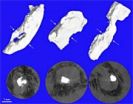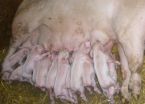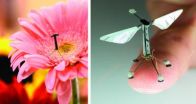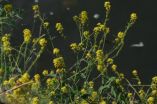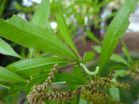(Press-News.org) A new method allows calcified and constricted blood vessels to be visualized with micrometer precision, and can be used to design containers for targeted drug delivery. Within the project "NO-stress", materials scientists from the Medical Faculty of the University of Basel combined cutting-edge-imaging techniques to visualize and quantify the constrictions caused by atherosclerosis.
Cardiovascular diseases, including atherosclerosis, are associated with plaque formation and the most prevalent cause of death worldwide. Unlike vessels and other soft tissues, the plaque formed provides strong contrast in X-rays, as known from bone. So far, it has therefore been difficult or even impossible to identify soft tissues in the direct neighborhood of calcifications using X-rays.
A team of researchers from laboratories in three European countries, led by Bert Müller (Biomaterials Science Center at University of Basel), has developed a protocol that is based on the combination of hard X-ray tomography and established histology methods, to visualize the vessels constricted by atherosclerosis. The data about the morphology of the constricted vessels is used to simulate blood flow and determine related shear stresses. The shear stress is significantly enhanced at the constrictions and forms the basis for the development of specialized nano-containers for the targeted and local delivery of vasodilation drugs.
Differentiation between soft and hard tissues
The new method combines known approaches and is not only suitable for the three-dimensional characterization of atherosclerotic blood vessels but also for any other combination of strongly and weakly X-ray absorbing species including cartilage and bone. It takes advantage of conventional X-ray absorption and, in addition, of X-ray phase contrast measurements, which are for example accessible via grating interferometry. As the phase contrast is much less dependent on the atomic number of the constituents than the absorption contrast, the soft tissues in the vicinity of hard tissues become much more easily visualized.
In summary, the authors demonstrate that strongly calcified arteries are thoroughly characterized by the combination of the non-destructive tomography measurements in X-ray absorption and phase contrast modes, and established histology techniques. The project "NO-stress" is funded within the National Research Programme NRP 62 "Smart Materials" by the Swiss National Science Foundation.
INFORMATION:
Original citation
Margaret N Holme, Georg Schulz, Hans Deyhle, Timm Weitkamp, Felix Beckmann, Johannes A Lobrinus, Farhad Rikhtegar, Vartan Kurtcuoglu, Irene Zanette, Till Saxer, Bert Müller
Complementary X-ray tomography techniques for histology-validated three-dimensional imaging of soft and hard human tissues
Nature Protocols 9, 1401-1415 | doi:10.1038/nprot.2014.091
Mapping atherosclerotic arteries: Combined approach developed
2014-05-23
ELSE PRESS RELEASES FROM THIS DATE:
Risk is much more than a game
2014-05-23
Wildfires and flooding affect many more people in the USA than earthquakes and landslide and yet the dread, the perceived risk, of the latter two is much greater than for those hazards that are more frequent and cause greater loss of life. Research published in the International Journal of Risk Assessment and Management, suggests that a new paradigm for risk assessment is needed so that mitigation plans in the face of natural disasters can be framed appropriately by policy makers and those in the emergency services.
Maura Knutson (nee Hurley) and Ross Corotis of the University ...
The protective milk shot
2014-05-23
Antibodies against C. suis are transferred via the sow's very first milk to the piglets immediately after birth. This was discovered by veterinarian and parasitologist Lukas Schwarz and his colleagues in 2013. These findings prompted the researchers at the Institute for Parasitology to look for a way to increase the level of these antibodies in sows. The ultimate goal was to provide the piglets with as much antibodies as possible via their mother's milk during the first few days of life.
Piglets from infected mothers are healthier
The idea paid off. Piglets from infected ...
Nature inspires drones of the future
2014-05-23
Researchers have been taking tips from nature to build the next generation of flying robots.
Based on the mechanisms adopted by birds, bats, insects and snakes, 14 distinguished research teams have developed solutions to some of the common problems that drones could be faced with when navigating through an urban environment and performing novel tasks for the benefit of society.
Whether this is avoiding obstacles, picking up and delivering items or improving the take-off and landing on tricky surfaces, it is hoped the solutions can lead to the deployment of drones in ...
Rapid evolution aids spread of exotic plant species
2014-05-23
A team of Belgian biologists led by researchers at KU Leuven has provided the first genetic evidence that rapid evolution can help non-native plant species spread in new environments. Using samples of centuries-old herbaria and DNA analysis, the researchers reconstructed the genetic adaptations undergone by the Pyrenean rocket prior to its rapid spread in Belgium.
The Pyrenean rocket (Sisymbrium austriacum subsp. chrysanthum) is a plant that grows in the mountains of southern Europe and is particularly prevalent in the Pyrenees. The species was first reported in Belgium ...
Lack of plant diversity spurs cankerworm damage in cities
2014-05-23
Research from North Carolina State University finds that a lack of plant diversity is a key contributor to the widespread defoliation caused by cankerworms in cities, and highlights the role that increasing diversity can play in limiting future damage.
Fall cankerworms (Alsophila pometaria) are caterpillars that are native to the eastern United States and hatch in early spring. The cankerworms defoliate trees and other plants, eating new leaves as they emerge – which is both unsightly and can ultimately kill the plants.
"We see cankerworms doing more damage to trees ...
Flatland optics with graphene
2014-05-23
Researchers from CIC nanoGUNE, in collaboration with ICFO and Graphenea, introduce a platform technology based on optical antennas for trapping and controlling light with the one-atom-thick material graphene. The experiments show that the dramatically squeezed graphene-guided light can be focused and bent, following the fundamental principles of conventional optics. The work, published yesterday in Science, opens new opportunities for smaller and faster photonic devices and circuits.
Optical circuits and devices could make signal processing and computing much faster. ...
Bacterial adaptation contributes to pneumococcal threat in sickle cell disease patients
2014-05-23
Researchers have identified differences in the genetic code of pneumococcal bacteria that may explain why it poses such a risk to children with sickle cell disease and why current vaccines don't provide better protection against the infection. St. Jude Children's Research Hospital scientists led the study, which appeared earlier this month in the journal Cell Host & Microbe.
The findings will aid efforts to improve vaccine effectiveness and inform research into new ways to protect young sickle cell disease patients from life-threatening pneumococcal infections that can ...
Breakthrough in RSV research to help infected children
2014-05-23
Researchers at Le Bonheur Children's Hospital and the University of Tennessee Health Science Center announced results today from a clinical trial of a drug shown to safely reduce the viral load and clinical illness of healthy adult volunteers intranasally infected with respiratory syncytial virus (RSV).
Detailed results of this study were presented by lead researcher Infectious Disease Specialist John DeVincenzo, MD, this week during a poster discussion session at the American Thoracic Society 2014 International Conference in San Diego. He serves as medical director of ...
Argonne scientists discover new phase in iron-based superconductors
2014-05-23
Scientists at the U.S. Department of Energy's Argonne National Laboratory have discovered a previously unknown phase in a class of superconductors called iron arsenides. This sheds light on a debate over the interactions between atoms and electrons that are responsible for their unusual superconductivity.
"This new magnetic phase, which has never been observed before, could have significant implications for our understanding of unconventional superconductivity," said Ray Osborn, an Argonne physicist and coauthor on the paper.
Scientists and engineers are fascinated ...
Health-care professionals must be aware of rarer causes of headaches in pregnancy
2014-05-23
Most headaches in pregnancy and the postnatal period are benign, but healthcare professionals must be alert to the rarer and more severe causes of headaches, suggests a new review published today (23 May) in The Obstetrician & Gynaecologist (TOG).
The review looks at common causes for headaches during pregnancy and the postnatal period, possible conditions that may be associated with headaches and how healthcare professionals should manage the care of the woman appropriately.
There are 85 different types of headache. Approximately 90% of headaches in pregnancy are migraine ...
